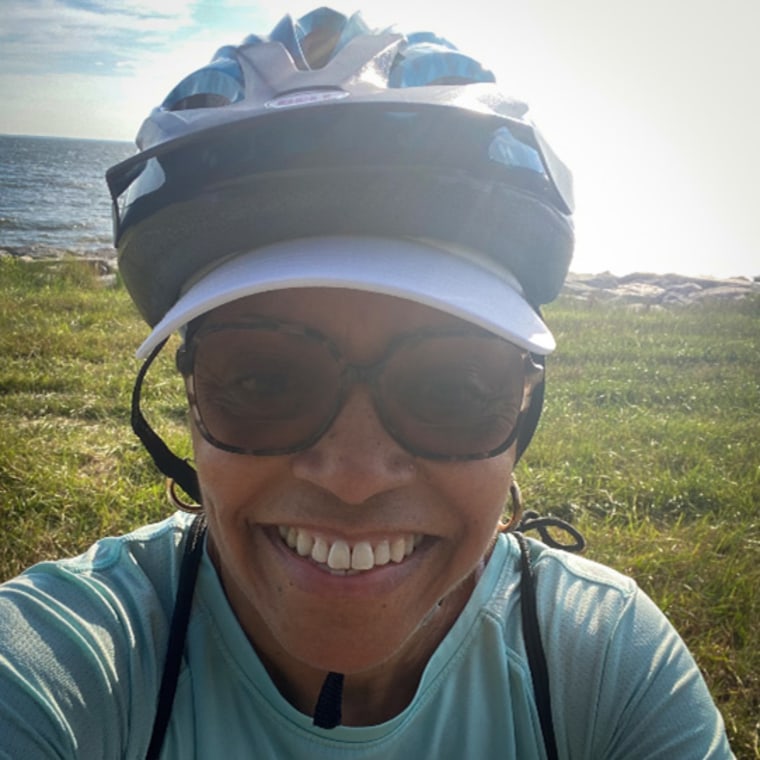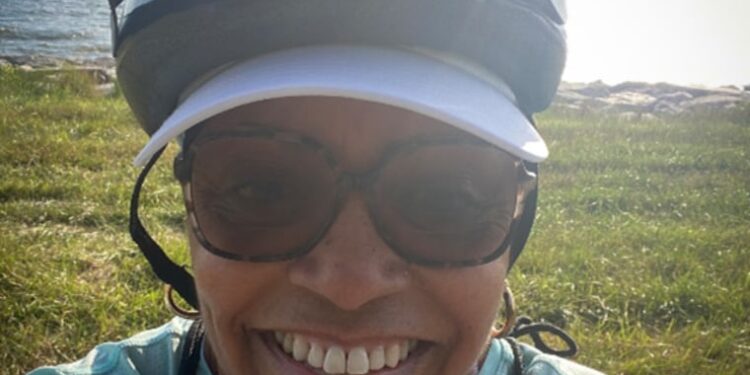There might be only one American who knows exactly what 16-year-old Quincy Wilson will be feeling as a youngster sprinting on the sport’s biggest stage.
Wilson’s rapid ascent from Maryland prodigy to Olympic contender has tapped the memory bank of 70-year-old Esther Stroy Harper, who was just 15 when she ran the 400 meters for the U.S. in Mexico City in 1968.
“Oh, yes, this has brought back big memories,” Stroy Harper told NBC News recently. “Every time I see a youngster like him participating and going to the Olympics, it brings back lots of memories.”
Wilson is the youngest-ever male to make the U.S. Olympic track-and-field team, while Stroy Harper remains the youngest person ever for Team USA.
Even though Stroy Harper lives in Camp Springs, Maryland, less than 40 miles from where Wilson is enrolled at the Bullis School in Potomac, they’ve never met. She has trained on the same track and has been closely following his junior career.

“I’ve gone to the Penn Relays for the past three years and I’ve watched this young man run, and oh, my goodness,” a laughing Stroy Harper said of Wilson, who will be junior this fall.
“I was jumping up for joy and pushing him through that finish line at the Olympic trials,” she added. “I hope he continues doing as well as he’s doing because he’s awesome. He is definitely truth.”
Her advice to Wilson is simple: Ignore everyone but your coach and don’t get distracted.
“Stick to your plan, listen to your coach and run the race that you know you can run, that you’ve been running all year that’s gotten you to the Olympic trials and now you’re in the Olympics,” she said. “Continue to run that same race. Don’t deviate from that.”
Wilson missed out on qualifying as an individual in the 400 meters, finishing a competitive sixth at 44.94 seconds. Quincy Hall won that race at trials at 44.17.
Earlier in the trials, Wilson clocked in at 44.66, which set an under-18 record. He would go on to beat that time in the semifinals.
A week after his 400-meter Paris dream appeared dashed, he was named to the team as a possible relay candidate for the 4×400.
Before Wilson was named to the team, the youngest U.S. males to make the Olympic track squad were 1500-meter runner Jim Ryun and sprinter Erriyon Knighton, who were both 17 in 1968 and 2021, respectively.
Southern California-based sports psychologist Ross Flowers said any young athlete in such a setting will have to face down self-doubt.
“I would tell them they deserve to be there just like anyone else,” said Flowers, who counts the U.S. Olympic Committee, the Los Angeles Lakers, the L.A. Rams and the San Francisco Giants as past clients.
“They put in the same hard work, effort and training in qualifying and making Olympics,” he said. “They made the team like anyone else.”
Despite making a squad based on quantified standards, the mental hurdles faced by young athletes can be daunting.
“As a younger athlete getting to this level and competing against people that are twice your age, of course there’s going to be self-doubt or concern when you’re looking at people (teammates or opponents) that you’ve idolized,” Flowers said.
The action in Paris kicks off with opening ceremonies on July 26 and closes on Aug. 11. But back in 1968, the games ran from Oct. 12 to Oct. 27, during the school year.
The track team camped out in Los Alamos, New Mexico, starting in late August of 1968 so athletes could acclimate themselves to the oxygen-starved conditions of Mexico City.
And while Stroy Harper’s parents supported her Olympic dreams, they didn’t want her falling behind academically. So Stroy Harper had to enroll in a local school where she attended class in the morning before training like a world-class athlete in the afternoon.
She’d be up at 5:30 a.m., get in a run, shower, grab breakfast, go to class “and then meet everybody on the track at 3:30,” Stroy Harper recalled.
“I was still a teenager and I had just gone into the 10th grade, so they didn’t want me coming back [to school] in the middle of October and not know what was in the classes,” Stroy Harper said.
“I remember that because the high altitude, it’d make you tired. And I was running early in the morning, then had to go to class, had to stay awake, then come back, work out to 6, then eat, go to bed, and do it all over again.”
When she got to Mexico City, Stroy Harper made it through the first round of competition. But in the semifinals, she was slowed by a lingering hamstring injury and finished fifth in her heat, just outside the top four needed for qualification to the finals.
That hamstring was troublesome for years to come and she did not qualify for the 1972 Olympics in Munich.
In between those Olympics, she won Pan American gold as a member of the 4×400 relay team and bronze in the 200-meter.
The retired real estate appraiser remains active, regularly running in 5K and 10K races and going 3 miles each day on a treadmill or on foot outside in Prince George’s County.

Stroy Harper said she’s confident Wilson will perform well in Paris because he doesn’t know any better.
“Right now he’s too dumb and young” to feel pressure, the chuckling onetime sprinter said. “He just wants to run, and he knows he’s fast and he trains hard. He wants to show what he can do.”







